ART CITIES:Paris Openings 18 May
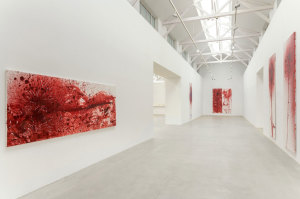 Resonating throughout Imran Qureshi’s exhibition “The Seeming Endless Path of Memory” is the artist’s exploration of the infinite through the motif of the fold: the screen-like structure of his panel painting, with gradations from red to gold leaf and measuring ten metres in length, the undulating shape of an endlessly extending miniature painting, and the folded canvases of the relief paintings. The large-scale exhibition also features a series of distinctive miniature paintings exploring self-portraiture and the artist’s idea of landscape. Qureshi’s varied abstract paintings created over the last two years reflect at times the traces of his own body and personify the constant dialogue between monumentality and the minute. The exhibition title, along with the titles of the works on display, echo the words of Pakistani poet Faiz Ahmed Faiz (1911-1984) prevailing throughout Qureshi’s work. They reveal human metaphors, with various social and cultural connotations, and subtly reflect the threat of violence as a continuous motif. Elsewhere, Qureshi draws upon the tradition of action painting, welcoming gravity, velocity, and improvisation into the artistic process: through direct physical engagement with the canvas, the act of painting becomes a performative part of the painting’s expression. Info: Galerie Thaddaeus Ropac – Pantin, 69 avenue du General Leclerc, Pantin, Duration: 18/5-27/7/19, Days & Hours: Tue-Sat 10:00-19:00, https://ropac.net
Resonating throughout Imran Qureshi’s exhibition “The Seeming Endless Path of Memory” is the artist’s exploration of the infinite through the motif of the fold: the screen-like structure of his panel painting, with gradations from red to gold leaf and measuring ten metres in length, the undulating shape of an endlessly extending miniature painting, and the folded canvases of the relief paintings. The large-scale exhibition also features a series of distinctive miniature paintings exploring self-portraiture and the artist’s idea of landscape. Qureshi’s varied abstract paintings created over the last two years reflect at times the traces of his own body and personify the constant dialogue between monumentality and the minute. The exhibition title, along with the titles of the works on display, echo the words of Pakistani poet Faiz Ahmed Faiz (1911-1984) prevailing throughout Qureshi’s work. They reveal human metaphors, with various social and cultural connotations, and subtly reflect the threat of violence as a continuous motif. Elsewhere, Qureshi draws upon the tradition of action painting, welcoming gravity, velocity, and improvisation into the artistic process: through direct physical engagement with the canvas, the act of painting becomes a performative part of the painting’s expression. Info: Galerie Thaddaeus Ropac – Pantin, 69 avenue du General Leclerc, Pantin, Duration: 18/5-27/7/19, Days & Hours: Tue-Sat 10:00-19:00, https://ropac.net
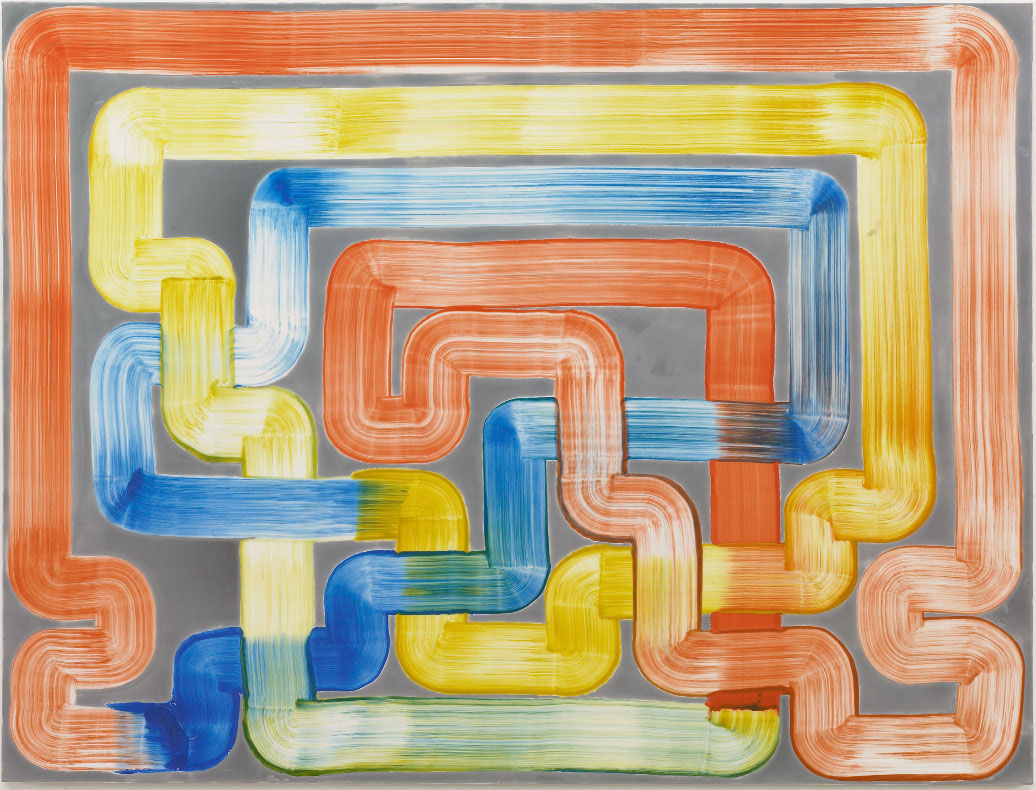 Bernard Frize’s solo exhibition “Now or Never” features a a wide range of paintings, including new productions. While regularly revisiting various moments of his past practice, Frize has never stopped exploring new concepts, inventing novel ways to paint (starting with the development, 10 years ago, of processes based on the creation of one painting by multiple people simultaneously), but he has also, since the mid-1990s, abandoned all recourse to what we summarize as “figurative art,” namely the representation of real and identifiable objects or images. It is only by accident or allusion, and by a natural predisposition of our vision, that we perceive this or that painting as evoking a stone, a curtain or a bookshelf. So much so that this action of expansion that first strikes us corresponds to another, of reduction or of disconnection. The paradox is far-reaching and leads immediately to the Frize’s conception of painting since the beginning, which is to constitute it of an ensemble of paradoxes, in other words of propositions contrary to common sense and expectation. Of course, the principle applies at the level of each work considered individually. Info: Galerie Perrotin, 76 rue de Turenne, Paris, Duration: 18/5-14/8/2019, Days & Hours: Tue-Sat Tue-Sat 11:00-19:00, www.perrotin.com
Bernard Frize’s solo exhibition “Now or Never” features a a wide range of paintings, including new productions. While regularly revisiting various moments of his past practice, Frize has never stopped exploring new concepts, inventing novel ways to paint (starting with the development, 10 years ago, of processes based on the creation of one painting by multiple people simultaneously), but he has also, since the mid-1990s, abandoned all recourse to what we summarize as “figurative art,” namely the representation of real and identifiable objects or images. It is only by accident or allusion, and by a natural predisposition of our vision, that we perceive this or that painting as evoking a stone, a curtain or a bookshelf. So much so that this action of expansion that first strikes us corresponds to another, of reduction or of disconnection. The paradox is far-reaching and leads immediately to the Frize’s conception of painting since the beginning, which is to constitute it of an ensemble of paradoxes, in other words of propositions contrary to common sense and expectation. Of course, the principle applies at the level of each work considered individually. Info: Galerie Perrotin, 76 rue de Turenne, Paris, Duration: 18/5-14/8/2019, Days & Hours: Tue-Sat Tue-Sat 11:00-19:00, www.perrotin.com
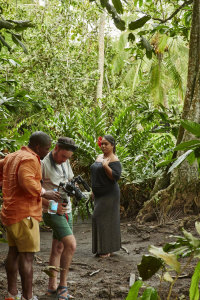 Over the past 15 years, Kehinde Wiley has developed a remarkable body of work that at once questions and participates in the western art-historical canon of portraiture. Wiley’s encounter with Tahiti joins with the artist’s continued journey across the contemporary world, following his explorations of North America, South Asia, and West Africa. Wiley’s new works, that are on show at Galerie Templon, are focused on Tahiti’s Māhū community, the traditional Polynesian classification of people of a third gender, between male and female. The Māhū were highly respected within their society until they were banned by Catholic and Protestant missionaries. Wiley’s portraits of beautiful, transgender Tahitian women reference and confront Paul Gauguin’s celebrated works, which also feature subjects from the transgender community, but are fraught with historical undertones of colonialism and sexual objectification. Building off of Wiley’s earlier portraits that addressed issues of masculine identity and virility, these new portraits explore issues of identity through the lens of transformation, exploring both artifice and artificiality as a trans-cultural phenomenon. Wiley’s focus on Tahiti now offers the opportunity to re-examine France, its colonial history, and its image through the prism of Gauguin’s work. True to his oeuvre, this exhibition presents a uniquely political and aesthetic perspective on the power of art to shift perception and to make visible history’s forgotten figures. Info: Galerie Templon, 28 rue du Grenier Saint-Lazare, Paris, Duration 18/5-20/7/19, Days & Hours: Tue-Sat 10:00-19:00, www.templon.com
Over the past 15 years, Kehinde Wiley has developed a remarkable body of work that at once questions and participates in the western art-historical canon of portraiture. Wiley’s encounter with Tahiti joins with the artist’s continued journey across the contemporary world, following his explorations of North America, South Asia, and West Africa. Wiley’s new works, that are on show at Galerie Templon, are focused on Tahiti’s Māhū community, the traditional Polynesian classification of people of a third gender, between male and female. The Māhū were highly respected within their society until they were banned by Catholic and Protestant missionaries. Wiley’s portraits of beautiful, transgender Tahitian women reference and confront Paul Gauguin’s celebrated works, which also feature subjects from the transgender community, but are fraught with historical undertones of colonialism and sexual objectification. Building off of Wiley’s earlier portraits that addressed issues of masculine identity and virility, these new portraits explore issues of identity through the lens of transformation, exploring both artifice and artificiality as a trans-cultural phenomenon. Wiley’s focus on Tahiti now offers the opportunity to re-examine France, its colonial history, and its image through the prism of Gauguin’s work. True to his oeuvre, this exhibition presents a uniquely political and aesthetic perspective on the power of art to shift perception and to make visible history’s forgotten figures. Info: Galerie Templon, 28 rue du Grenier Saint-Lazare, Paris, Duration 18/5-20/7/19, Days & Hours: Tue-Sat 10:00-19:00, www.templon.com
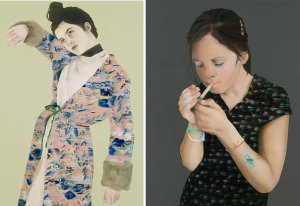 Katinka Lampe returns to Paris with “Instadentity”, a new set of paintings. Lampe’s work nearly always explores the question of our relationship with identity, whether it be intimate or overtly exposed. This time, she envisages the problematic construction of the image of oneself and of the other through the prism of social networks.“Instadentity” reworks in painting the narcissistic ambiguity encouraged by social networks, of which adolescents are the first victims, and also the first players. Waiting for confirmation from others, implicated in a constant competition: Katinka Lampe’s models pose the question of the virtual connection, which aspires to reality. The result is neither criticism nor negative; it is, in the first instance, creative work. Finally, Lampe offers spectators the same games as Instagram: identities constructed and disguised which result in a haziness in the reciprocal recognition of the self and the other. Behind the expression of virtual identity there also lies the question of potential identity. By tending to the image and artifices of her models, the artist augments possibilities and plays with the multiple reality of the personality. The desire for transformation, crystallised by social networks, projects identity towards the future, like a desired-for becoming, always more beautiful. Info: Les filles du calvaire Gallery, 17, rue des Filles-du-calvaire, Paris, Duration: 18/5-15/6/19, Days & Hours: Tue-Sat 11:00-18:30, www.fillesducalvaire.com
Katinka Lampe returns to Paris with “Instadentity”, a new set of paintings. Lampe’s work nearly always explores the question of our relationship with identity, whether it be intimate or overtly exposed. This time, she envisages the problematic construction of the image of oneself and of the other through the prism of social networks.“Instadentity” reworks in painting the narcissistic ambiguity encouraged by social networks, of which adolescents are the first victims, and also the first players. Waiting for confirmation from others, implicated in a constant competition: Katinka Lampe’s models pose the question of the virtual connection, which aspires to reality. The result is neither criticism nor negative; it is, in the first instance, creative work. Finally, Lampe offers spectators the same games as Instagram: identities constructed and disguised which result in a haziness in the reciprocal recognition of the self and the other. Behind the expression of virtual identity there also lies the question of potential identity. By tending to the image and artifices of her models, the artist augments possibilities and plays with the multiple reality of the personality. The desire for transformation, crystallised by social networks, projects identity towards the future, like a desired-for becoming, always more beautiful. Info: Les filles du calvaire Gallery, 17, rue des Filles-du-calvaire, Paris, Duration: 18/5-15/6/19, Days & Hours: Tue-Sat 11:00-18:30, www.fillesducalvaire.com
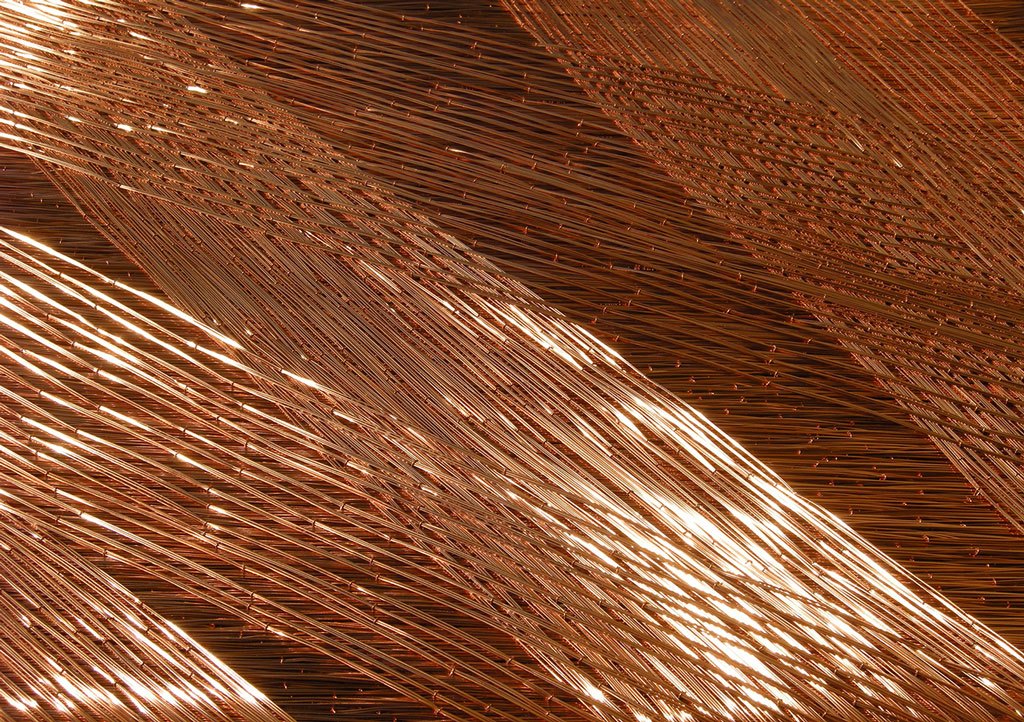 Antonella Zazzera’s solo exhibition “Luminescences” displays the artist’s latest works, among which are her “Quadri” in which she weaves, spectacularly, the painted gesture on a canvas, or plays with variations on shape and colors, the thickness of the wires, and their vibrations, to produce high-voltage sculptures in which light runs on material so as to make all its energy vibrate. More than any other material, she says, light is the basis of her sculpture, that she creates while “thinking of painting and its innumerable tones”. all of which she finds in copper. Zazzera continually weaves the thread of her sculpture with her hands, trying to feel, almost blindly, almost instinctively, the harmonious point where her copper wire will be inserted, make a knot, and go off in another direction. The weaving and braiding of her copper sculpture are reminiscent of the thick, smooth hairs of a horse’s back, the light in the honeycombs of beehives, plowed earth and the copper hues of its furrows, the inside of a wooden tree trunk that reveals its own coppery tones, the convolutions of the alveoli of a perfectly laid-out sunflower, bird nests for which Mother Nature takes back the leftovers of the copper wires, that birds use to build their own nests in her “Naturalia”. In all her work, light provides the fundamental key to its space and shape. Info: Jeanne Bucher Jaeger Gallery, 5 rue de Saintonge, Paris, Duration: 18/5-27/7/19, Days & Hours: Tue-Sat 10:00-19:00, https://jeannebucherjaeger.com
Antonella Zazzera’s solo exhibition “Luminescences” displays the artist’s latest works, among which are her “Quadri” in which she weaves, spectacularly, the painted gesture on a canvas, or plays with variations on shape and colors, the thickness of the wires, and their vibrations, to produce high-voltage sculptures in which light runs on material so as to make all its energy vibrate. More than any other material, she says, light is the basis of her sculpture, that she creates while “thinking of painting and its innumerable tones”. all of which she finds in copper. Zazzera continually weaves the thread of her sculpture with her hands, trying to feel, almost blindly, almost instinctively, the harmonious point where her copper wire will be inserted, make a knot, and go off in another direction. The weaving and braiding of her copper sculpture are reminiscent of the thick, smooth hairs of a horse’s back, the light in the honeycombs of beehives, plowed earth and the copper hues of its furrows, the inside of a wooden tree trunk that reveals its own coppery tones, the convolutions of the alveoli of a perfectly laid-out sunflower, bird nests for which Mother Nature takes back the leftovers of the copper wires, that birds use to build their own nests in her “Naturalia”. In all her work, light provides the fundamental key to its space and shape. Info: Jeanne Bucher Jaeger Gallery, 5 rue de Saintonge, Paris, Duration: 18/5-27/7/19, Days & Hours: Tue-Sat 10:00-19:00, https://jeannebucherjaeger.com
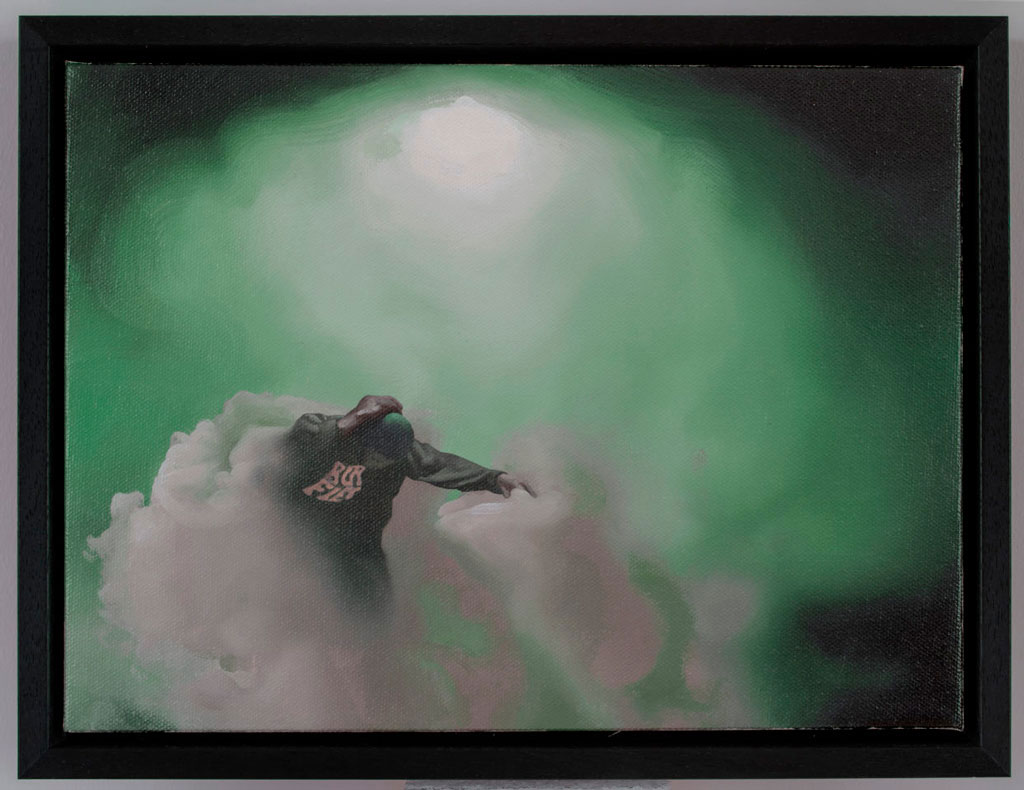 Guillaume Bresson in his solo exhibition presents a group of recent paintings realized in his New York studio. These attest to the evolution of his work from hyperrealistic street scenes to more imaginary territories. Via a system of representation derived from the teachings of Italian Renaissance and French Classicism, Guillaume Bresson portrays contemporary subjects—his striking depictions of society shift toward a form of oneiric lyricism, which, rather than rejecting the social world, transfigures it. The corps-a-corps, a constant theme in Guillaume Bresson’s oeuvre, is presented across a variety of settings that are more or less identifiable, more or less familiar or abstract: suburbia, a laundromat, the domestic environment of a kitchen, snowy woods that recall Pieter Brueghel the Elder’s wintry landscapes, a stormy sea. In the exhibition, Guillaume Bresson displays the different steps of his work process: perspective grids that remain apparent in the large paintings on canvas; smaller preparatory studies realized after sittings held with amateur models, which he subsequently rearranges at will. The artist also experiments with a photographic transfer technique, which constitutes the starting point of several paintings. Info: Galerie Nathalie Obadia, 3 rue du Cloître Saint-Merri, Paris, Duration: 18/5-29/6/19, Days & Hours: Mon-Sat 11:00-19:00, www.nathalieobadia.com
Guillaume Bresson in his solo exhibition presents a group of recent paintings realized in his New York studio. These attest to the evolution of his work from hyperrealistic street scenes to more imaginary territories. Via a system of representation derived from the teachings of Italian Renaissance and French Classicism, Guillaume Bresson portrays contemporary subjects—his striking depictions of society shift toward a form of oneiric lyricism, which, rather than rejecting the social world, transfigures it. The corps-a-corps, a constant theme in Guillaume Bresson’s oeuvre, is presented across a variety of settings that are more or less identifiable, more or less familiar or abstract: suburbia, a laundromat, the domestic environment of a kitchen, snowy woods that recall Pieter Brueghel the Elder’s wintry landscapes, a stormy sea. In the exhibition, Guillaume Bresson displays the different steps of his work process: perspective grids that remain apparent in the large paintings on canvas; smaller preparatory studies realized after sittings held with amateur models, which he subsequently rearranges at will. The artist also experiments with a photographic transfer technique, which constitutes the starting point of several paintings. Info: Galerie Nathalie Obadia, 3 rue du Cloître Saint-Merri, Paris, Duration: 18/5-29/6/19, Days & Hours: Mon-Sat 11:00-19:00, www.nathalieobadia.com
